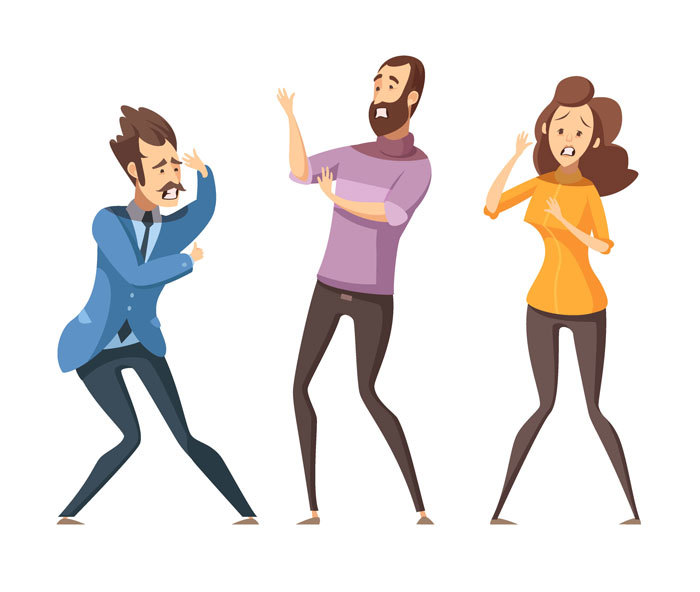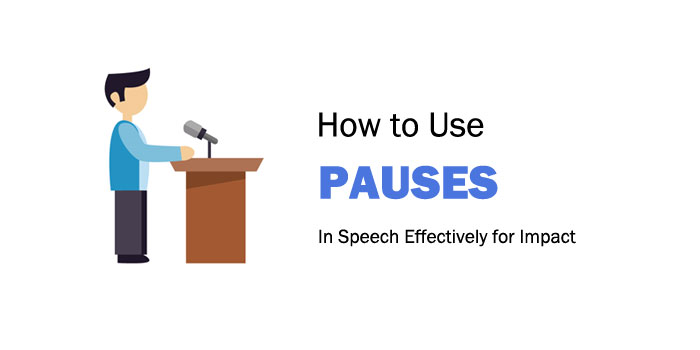Pauses in Speech: How to Use it Effectively for Impact
Do you know the power of pauses in a speech?
One of the most useful tools in public speaking is pause. However, few people can do it effectively.
To be understood, speakers need to employ pauses in conversation. Your listener will not notice your pauses, but you will be able to convey your ideas more convincingly and clearly.
If you don't express yourself well, your audience will have trouble grasping your point of view, and you risk appearing less credible and reliable.
10 Effective Ways to Employ Pauses in Speech
1. Start at a Low Pace
You'll likely be greeted with applause if you're giving a speech at a large gathering. Please allow the clapping to die down before you begin speaking.
If the event is being videotaped, as it may be at a TED lecture, wait until the applause has settled before continuing. This prevents the applause from drowning out your powerful introduction.
2. Wait for the Engagement of Your Audience
If you tell a joke and it goes over well, a pause allows the audience to cool down before you continue speaking.
Comedians are masters at this technique and often wait a few seconds after the applause dies down before moving on to the next segment of their act.
3. Highlight Key Elements
You can highlight important points by pausing before, during, or after you speak to emphasize what you've just said.
You should jot down the key phrases and figure out where you'll pause your speech around those words as you prepare it.
Spread them throughout your speech and practice them well so you're not winging them at the last minute. Remember that time moves more quickly while you're in the spotlight, so pause for up to three seconds if necessary.
You might also like: How to Prepare for a Speech
4. Hint a Shift in the Topic or Mood
To signal a shift in mood or subject matter, pause briefly between sections of your presentation.
It might also be useful to do this after your opening statement and again before your final thoughts so that your listeners can follow along with your argument.
5. Ensure Clear Articulation
Ensure your audience can understand you by pausing briefly after each comma in a list and after each period in a sentence. This will ensure a clear and smooth content delivery.
This is especially helpful if the topic of your speech is difficult to grasp or if the audience's native language is not the same as yours.
Related: How to Be More Articulate in Speaking
6. Remember Your Next Thought
A pause will allow you to recollect your thoughts without alerting the audience to your forgetfulness or forcing you to apologize for losing their attention.
Take a little pause, and try to focus your attention quickly.
7. Replace Fillers
Using fillers is fine, but overusing them shows carelessness and a lack of fluency. If you overuse a certain filler during your preparation, you can take a pause.
You can learn to recognize your filler words by recording your voice while you practice, either with a mobile phone voice recorder or in virtual reality. Alternatively, you can use a silent pause instead of articulating it loudly.
You might also like: How to Stop Using Filler Words
8. Use Eye Contact
Eye contact is a great way to emphasize what you're saying. If the crowd is big, pause for a few seconds to make eye contact with various parts of the setting.
This keeps the audience interested and makes them feel like they have a part in the presentation.
You might also like: 5 Ways to Use Eye Contact Effectively
9. Interact With Your Audience
Pause frequently to allow the other person to ask questions or clarify a point; this is especially important when conversing with someone at a networking event, in a negotiation, or while making a sales presentation.

By doing so, you can learn more about the other person's needs, wants, and interests, which can help steer the conversation in a direction that benefits both of you.
Search active listening and try some suggested exercises to hone your listening abilities.
10. Think Your Answers
When asked a question, don't just respond. Instead, hear, process (this is your pause), and then respond. The pause provides you time to process the question and formulate a response.
An erroneous answer in the middle of a question can be quite embarrassing.
The Pause Effects
Pauses Allow for Better Comprehension
You'll be more easily understood if you pause occasionally. In contrast to writing, your listeners won't be able to use punctuation, bold font, italics, bullets, etc.
When speaking, pauses can indicate to your audience when a particular phrase, sentence, or paragraph has ended, and a new one has begun.
Control the Pace of Your Presentation
Your delivery's tempo is entirely within the control of your pauses. There is a finite amount of data that your listeners can process.
We learn from experts that there are three different lengths of silence in speech: short, medium, and lengthy.
Reading information typically results in only short and medium pauses, while speeches without reading notes use medium and long pauses.
What should we learn from this?
While giving your speech, lengthen your pauses to make it sound more natural. Your listeners will be able to follow along.
Ensure Healthy Communication Style
To rejuvenate both body and mind, take frequent breaks.
Long pauses give you time to relax or catch your breath. More oxygen will help your brain and restore a clearer voice tone.
Capture the Attention of Your Audience
Use pauses to keep your listeners interested. Using pauses allows listeners to process what you've said and draw parallels to what they already know or have experienced.
Creating these one-on-one bonds with your audience is the cornerstone of content engagement.
Effectively Convey Non-verbal Communication
Emotions are more effectively communicated through pauses.
Just like in a chat with a close friend or family member, genuine use of pauses can convey an array of emotions.
Minimize the Use of Fillers
Pauses replace filler words. The overuse of fillers may indicate a lack of expertise, preparation, and authenticity.
One of the easiest strategies to reduce the use of such fillers while giving yourself time to think about what to say next is to employ pauses.
Help Organize Your Next Thought
While you're talking, your mind is already working on the next thing you want to say. In public, you communicate these ideas through your voice, body language, and other means of contact.
A speaker who can mentally prepare a series of responses in advance is much more likely to be effective. The act of pausing buys your brain some time to play catch-up with your mouth.
The Power of Pausing
It's acceptable to pause for effect, especially if you want to stress the significance of what you're about to say. Think about how you could improve your speech by strategically inserting pauses.
The following are a few points that emphasize the power of pausing.
- When making a final appeal, it can be helpful for the speaker to pause briefly before speaking so that they have time to collect their thoughts. This will allow them to express their final words with greater conviction.
- By pausing, you can prime your audience to receive your message. When you stop to think about something, you come up with a lot more engaging thoughts than you would have otherwise.
- Suspense can be effectively created by pausing at the right time. If you hesitate before the punch line or conclusion, people will be curious to find out what happens.
- Take a breather after introducing a major point so that your listeners can absorb the information before moving on.
- You can pause to indicate the end of a statement or main point.
Tips to Improve Your Pause in Speech
- Pausing during everyday talks is likely a reflex for most of us. You can pause on stage if you can pause while talking to your pals. While there's no substitute for repeated public speaking, there are some exercises that may help. For starters, you can watch speech videos and pay attention to the pauses in footage of public speakers, especially politicians.
- If you are giving a presentation through notes, you can put the word pause in large, bold font at the top of each page of your speech notes. However, you must not do it if you plan on sharing the notes with others.
- Third, have a reliable audience member critique your pauses before a speech or presentation. To guarantee they listen to the gaps in your speech, ask them before you start talking.
- Moreover, record a video of yourself talking and play it multiple times. Apart from other factors, pay close attention to the pause effect in your delivery. Think about the pauses you inserted or should have inserted.
- Further, you can grab a book and read it aloud to yourself for a short period. At each comma, give yourself a few moments to stop and reflect. When you finish a sentence, take a two-second breather. A three-second break should be used after each paragraph. It will seem forced, and you shouldn't halt in this way under regular circumstances. However, it will teach you to pause more deliberately.
- Finally, remember to pause before continuing a conversation throughout the day. Wait for a second or two after others have finished speaking before joining the conversation yourself.
Wrap Up
Pauses in speech are a powerful tool that can convey various things. Most importantly, it shows that you are a fluent speaker that controls their speech.
Follow our tips to improve the usage of pauses in your speech.
